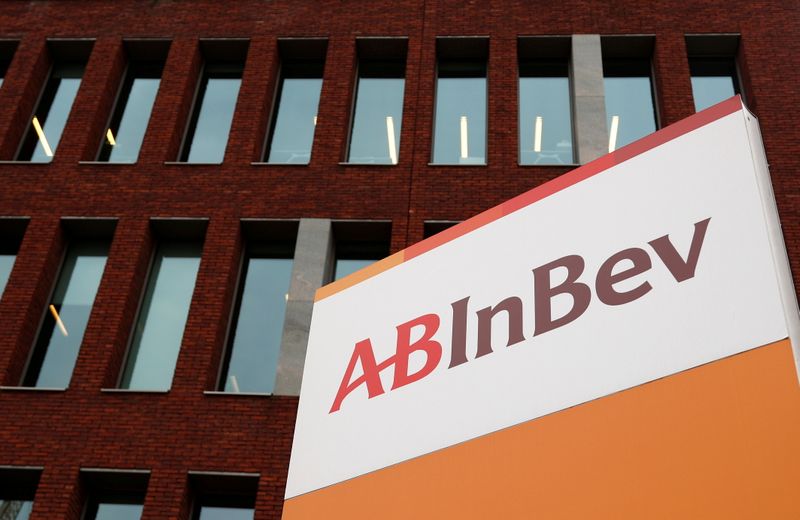By Philip Blenkinsop
BRUSSELS (Reuters) -Anheuser-Busch InBev, the world's largest brewer, upgraded its forecast for 2021 earnings growth on Thursday after posting a surprise increase in third-quarter profit, buoyed by beer sales in Brazil.
The maker of Budweiser, Corona and Stella Artois said it expects core profit or EBITDA (earnings before interest, tax, depreciation and amortisation) to grow between 10% and 12% in 2021, compared with an 8%-12% growth forecast earlier.
The Belgium-based company's shares were up 7.3% at 52.94 euros at 0800 GMT, making them clearly the strongest performers in the FTSEurofirst 300 index of leading European shares, although they are still 20% down from a mid-June peak.
Some analysts had raised concerns about AB InBev even meeting its original guidance. Broker Nomura noted the new guidance was the brewer's first upgrade in several years after it outperformed expectations in every region in the third quarter.
AB InBev said core profit rose 3.0% on a like-for-like basis in the July-Sept period, against an expected 2.3% drop, according to a company-compiled poll.
It said revenue grew 15.3% in Brazil as consumers drank more and purchased higher-priced beers.
Revenue and profits were also higher in Colombia and South Africa, reflecting easing of COVID-19 restrictions, and in Europe as vaccination rates increased.
However, they declined in the United States, where there were supply chain disruptions, as well as in Mexico, a year on from post-lockdown inventory replenishment, and in China, where COVID-19 restrictions disproportionately hit its key regions.
AB InBev's results follow mixed earnings reported by its rivals on Wednesday.

Carlsberg (OTC:CABGY), the world's number three brewer, raised its 2021 profit forecast after higher-than-expected third-quarter revenue, helped by recovery in Europe and China.
By contrast, global number two Heineken (OTC:HEINY) reported a steeper-than-expected drop in beer sales in the third quarter, hit by a lockdown in Vietnam, while retaining its forecast for full-year results at below pre-pandemic levels.